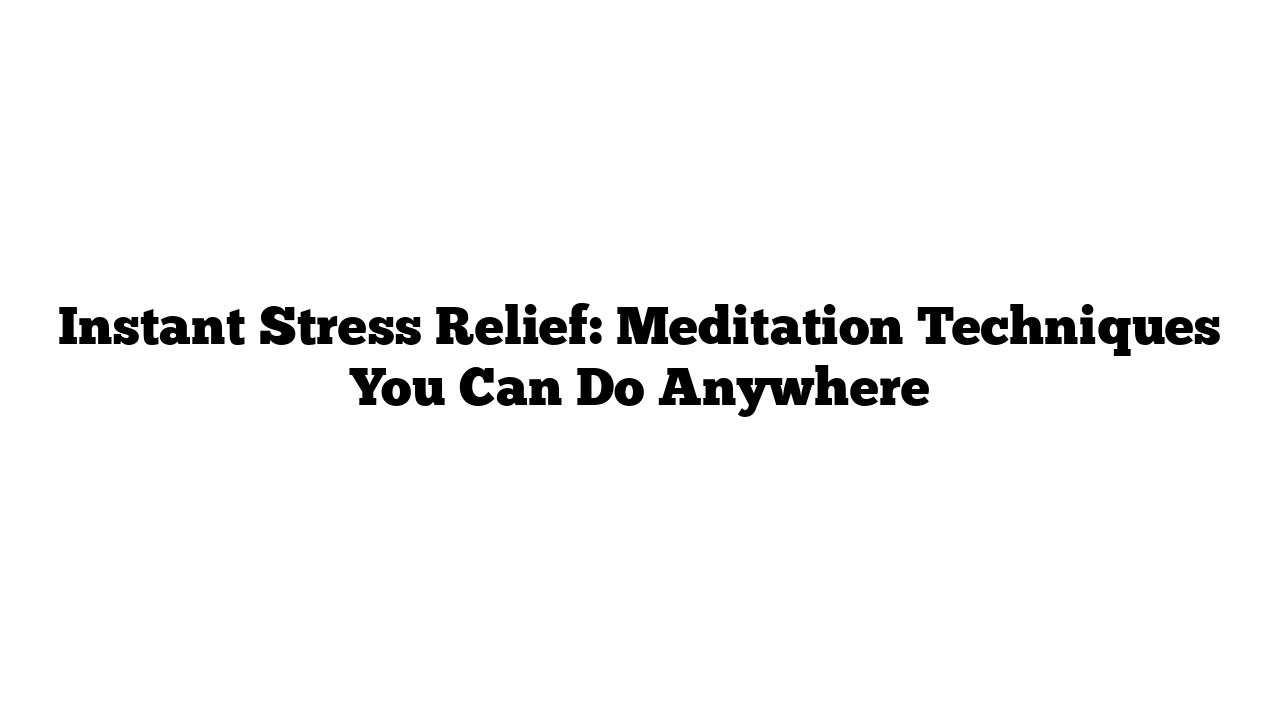Introduction to Mindfulness for Stress Relief
Have you ever been on the verge of a meltdown just hours before a deadline? I have, and I’d like to share how I deal with it. Hi there! My name is Sarah, and I’m an engineer and management consultant currently on a break to rediscover how to live more authentically.
It’s interesting that in high-paced corporate environments filled with stress, we often lack the tools to handle it effectively. I want to help change that.
Understanding the Power of Breath
Breathing techniques are powerful tools for managing stress and emotions. The way we breathe is closely linked to our feelings. For example, when we feel joy, we tend to breathe deeply and regularly. But when we’re anxious or angry, our breathing becomes short and shallow.
The good news? We can use our breath to influence our emotions. By calming our breath, we can trick our brain into feeling more relaxed, which helps us think clearly—especially when deadlines are approaching.
Before we dive into some breathing exercises, it’s important to recognize when you need them. Often, we don’t realize we’re tense until our shoulders are tight, or our minds are racing with thoughts. That’s the moment to remember: it’s time for a breathing exercise.
There are many excellent guides on how to breathe deeply. If you’re interested, I can share some resources. But today, I want to show you two simple techniques that I use regularly to manage my stress levels.
Technique 1: Box Breathing for Instant Calm
Box breathing is a fantastic exercise for those high-stress moments when your mind is racing. This active meditation requires you to count, which helps focus your mind away from stress.
How to Do Box Breathing:
- Breathe in while counting to four.
- Hold your breath for a count of four.
- Breathe out while counting to four.
- Hold your breath again for a count of four.
Repeat this cycle for at least a minute or two to feel its calming effects.
Let’s Practice Box Breathing Together:
- Close your eyes.
- Take a deep breath in and out.
- Now, let’s begin:
- Breathe in (count to four).
- Hold (count to four).
- Breathe out (count to four).
- Hold (count to four).
- Repeat this as needed.
Feel free to adjust the counts to what feels right for you. The goal is to find what makes your body feel calmer.
Technique 2: Vipassana Meditation for Deep Relaxation
The second technique I want to share is Vipassana meditation. I learned this during a 10-day silent retreat, and it has helped me calm my mind and become more resilient over time.
How to Practice Vipassana:
- Focus on the area around your nose.
- Pay attention to how the air feels as it enters and exits your nostrils.
- Don’t try to control your breath; simply observe it.
I often use this technique in the morning after my shower or while on the subway. When I notice my breath becoming shallow, I remind myself to focus on my breathing.
Let’s Practice Vipassana Together:
- Close your eyes.
- Focus on your breath around your nose.
- Feel how the air enters and leaves.
- If your mind wanders, gently bring your focus back to your breath.
- Take a deep breath in and out, then slowly open your eyes when you’re ready.
Remember, it’s completely normal to get distracted during meditation. Even experienced meditators find their minds wandering.
Practical Tips for Consistent Mindfulness Practice
- Be Kind to Yourself: This practice isn’t about perfection. It’s about investing time in yourself to build the skills you need to handle stress.
- Recognize Your Wins: Celebrate the moments when you notice you need a break and take one.
- Create a Routine: Try to incorporate these techniques into your daily life, or find colleagues who want to lower their stress levels together.
I hope these techniques inspire you to take breaks during stressful moments. If you enjoyed this content, please consider subscribing, liking, or leaving a comment—it always makes my day! Take care of yourself, and I’ll see you next time. Bye!
Additional Resources
- If you’re interested in learning more about breathing techniques, here are some helpful links:
- The Benefits of Deep Breathing
- How to Meditate
By practicing these techniques, you can create moments of calm in your busy life.
